calsfoundation@cals.org
Wildflowers
The varied ecosystems in Arkansas enable a large variety of wildflowers to grow within the state. From the river deltas to the mountaintops, Arkansas boasts an abundant array of over 600 native wildflowers. The majority of wildflowers in Arkansas are along rural roads and secluded areas. Due to the growing population and changes in the environment, the areas in which wildflowers grow are in constant fluctuation. Although highways and the development of land have eliminated a majority of the state’s native wildflowers, programs are under way to preserve these flowers and bring them back to the roadways.
Common Wildflowers
The most common wildflowers on Arkansas highways today are as follows:
| Bird’s Foot Violet | (Viola pedata) | Nearly the entire state sports this small flower from April through May. The violet’s color appears in phases from light to dark violet, and the flower is about one inch wide. The leaves are what give this violet its name; they are divided into slender lobes that resemble a bird’s foot. |
| Black-eyed Susan | (Rudbeckia hirta) | From May to October, these showy flowers can be seen statewide in fields and roadsides. They furnish a browse for deer with their yellow rays and dark brown disk flowers in large flower heads that are about two and a half inches in diameter. |
| Butterfly Weed | (Asclepias tuberosa) | Irresistible to butterflies, this is found nearly statewide from May to September. Its bright orange to reddish-orange flowers are seen less frequently in the Delta region. |
| Carolina Larkspur | (Delphinum carolinium) | This plant can grow to as tall as four feet high with a long spike of whitish, deep blue, or reddish-blue spurred flowers about one and a half inches long. The leaves have very slender lobes. This flower is found nearly statewide from May to July in open woods, slopes, ledges, and roadsides. |
| Downy Phlox | (Phlox pilosa) | This flower gets its name from the slightly hairy, or downy, stalks with pink or pale pink flowers, sometimes with a purple center. It is found in areas with thin soils and rocky or shale outcroppings. It can be found statewide from April through July. |
| Goldenrod | (Solidago canadensis) | These large yellow flower heads are separated but grouped fairly close to the main stem. The flowers are located in open areas and rocky slopes over most of the western two-thirds of the state. |
| Indian Paintbrush | (Castilleja coccinea) | For this plant, it is the upturned bracts surrounding the flowers, brilliant orange-red or sometimes yellow, rather than the flower itself that is deemed attractive. The plants are one to two feet tall and grow on rocky, alkaline, limestone hillsides of the Ozark Plateau. Although widely scattered over the state, they are usually on prairies from April to June. |
| Mexican Hat | (Ratibida columnifera, Ratibida columnaris) | This two- to three-foot flower blooms from June to October statewide. The flower has broad, drooping yellow petals with reddish-brown at the base of the flower. The entire flower head is up to two inches long. Mexican Hats grow on prairies, open areas, and pinelands. |
| Ohio Spiderwort | (Tradescantia ohiensis) | Often found along roadsides, railroads, and fields statewide, these spiderworts grow up to three feet tall and branch out, unlike other spiderworts found in the state. The flowers themselves are usually bright blue and bloom from May until July. |
| Ox-eye Daisy | (Chrysanthemum leucanthemum) | This flower is composed of a large yellow dome surrounded by white petals and found mainly in the Ouachita Mountains and Ozark Plateau regions. From May to July, they can be seen in fields and meadows, and on roadsides. |
| Pale Purple Coneflower | (Echinacea Pallida) | The flowering heads of this plant have various forms, with the rays varying in length and the colors ranging from white, greenish-white, or a pale reddish-purple. These three-foot-high plants are found in pinelands, cutover areas, and prairies nearly statewide, but are less frequent in the Delta region, from May through July. |
| Plains Coreopsis | (Coreopsis tinctoria) | Fields, ditches, and roadways sport these yellow and reddish-brown flowers from June until September for most of the state, except for some of the most northern counties. |
| Purple Coneflower | (Echinacea purpurea) | Roadsides, woodland areas, and idle lands host this wildflower mostly west of the Delta region from June to October. The rays in this species are shorter, broader, and more purple or reddish than those of the pale-purple coneflower. |
| Queen Anne’s Lace | (Daucus carota) | As an ancestor of the cultivated carrot, the Queen Anne’s lace is also known as wild carrot. The tiny flowers are in tight umbels, white or sometimes tinged with pink. It blooms from May to frost along roadsides and in fields mostly statewide. |
| Rose Vervain | (Glandularia canadensis) | Short corolla tubes of rose-colored and notched petals in rounded clusters characterize this flower. It can be seen in a few southwestern counties from May to September. |
| Showy Evening Primrose | (Oenothera speciosa) | These easily grown, drought-resistant flowers can be found in dry, open areas and roadsides statewide from April to July. The two-inch-wide white or pink flowers have pink veins with yellow centers. The flowers also bear eight-ribbed capsules. |
| Spider Lily | (Hymenoeallis caroliniana) | The Grand Prairie and a few central counties are home to the spider lily in low or marshy areas. The spider-like white blooms can grow as high as three feet and as wide as eight inches. The bulbs usually produce flowers from May until August. |
| Tickseed | (Bidens aristosa) | This large yellow flower gets its name from the seeds it produces—a two-pronged seed-pod that adheres to animal fur and people’s clothing. These flowers grow in bunches and can be as tall as six feet. They can grow in damp or dry areas along roadsides and in fields and ditches statewide from August until November. |
| Wild Bergamot | (Monarda fistulosa) | This wildflower is also known as horsemint or bee balm. Statewide, these can be seen in open fields and roadsides, often being browsed by deer, from June until September. |
An in-depth list with descriptions of Arkansas wildflowers was written by Carl G. Hunter and published by the Ozark Society Foundation in 1984. Hunter covered 600 species of native wildflowers and included 484 photographs. He also worked to change the way Arkansas treated its roadsides by reducing the use of herbicides and changing mowing schedules along Arkansas highways. He worked with organizations that supported the preservation and growth of Arkansas natural wildflowers.
Preservation Work
The Arkansas Natural Heritage Commission maintains many natural areas to offset the negative influences of surrounding land use. Not only do the most common human influences interrupt the natural ecological process, but fire suppression has also caused problems. Tall grass prairies have become overgrown with trees and shrubs, which has eliminated many natural grasses and wildflowers. Carefully planned prescribed fires can restore an area to its natural state. However, when providing a healthy habitat for native plants, many non-native, invasive plants can soon emerge. These invasive plants are carefully controlled by mechanical and herbicidal means.
The Nature Conservancy of Arkansas also has programs that focus on the state’s ecosystem. They practice controlled burning and other programs that focus on the diverse ecosystem of Arkansas. Hardwood forests, native prairies, wetlands, streams, and mountain ranges are all found in Arkansas. The conservancy has programs that focus on each of the state’s unique three ecosystems: the Ozark Karst (Cave), Blacklands, and the Delta or “Big Woods.” Four eco-regions are included in their efforts: Ozark Mountains, Ouachita Mountains, Mississippi River Alluvial Plain, and Upper West Gulf Coastal Plain.
Within the eco-regions and ecosystems, there are many areas dedicated to conservation where wildflowers can be seen: Bear Hollow Cave in Benton County, Brooksher Crooked Creek Preserve in Marion County, Mulberry River Preserve in Franklin County, Strawberry River Preserve and Ranch in Sharp County, Lyon Big Piney Creek Preserve in Newton County, Baker Prairie Natural Area in Boone County, Simpson Preserve on Trap Mountain in Hot Spring County, Presson-Oglesby Preserve in Franklin County, Benson Creek Natural Area in Monroe County, Burke Crowley’s Ridge Preserve in Phillips County, Columbus Prairie Preserve in Hempstead County, Terre Noire Natural Area in Clark County, Miller County Sandhills Natural Area in Miller County, Kingsland Prairie Preserve in Cleveland County, and Lorance Creek Natural Area in Pulaski County.
In addition to the work of the Arkansas Natural Heritage Commission, the Arkansas Department of Transportation works to beautify Arkansas highways with wildflowers in a number of ways. It sponsors Operation Wildflower, which assists in establishing and maintaining wildflower populations along Arkansas highways with seeds donated by sponsors. Interstates and primary highways with large medians offer the best display for showy wildflowers. In addition, the Wildflower Sign Program helps increase public awareness by identifying areas sponsored by local clubs, groups, or businesses.
The Arkansas Department of Transportation issues a free “Wildflowers of the Arkansas Roadways” brochure, which includes a map of routes covering over 1,000 miles within Arkansas where native wildflowers bloom. Also included are photographs of some of the most common wildflowers of Arkansas, as well as a brief description of each and when they bloom.
The Arkansas Native Plant Society (ANPS), organized in 1980, was formed to promote the preservation, conservation, and study of the wild plants and vegetation of Arkansas. The society also helps to educate the public as to the value of native flora and its habitats. The ANPS organizes field trips to various locations within the state to encourage participants to get a first-hand understanding of the diversity of native flora. It also provides scholarships and research grant, produces publications on the subject, gives awards to those citizens who have conducted outstanding research or aided conservation efforts, and sponsors the Vascular Flora of Arkansas Project. The Arkansas Vascular Flora Committee (AVFC), comprising graduate students, professors, and botanists who have collected, researched, studied, and documented the state’s flora, began in 2000. The list of collected flora includes both common and rare plants and those native and introduced from other areas. The collection of over 250,000 plants not only includes wildflowers but other herbaria. Some of the previously listed plants have not been found, but new plants have been found, as well as some that were thought to no longer grow within the state. The AVFC also offers conferences, workshops, and symposia throughout the state.
Wildflower Sites
Arkansas wildflowers begin to bloom around the state early in March. Several Arkansas state parks host wildflower events each spring, ranging from simple hikes to full weekends of programs. Some of the programs and celebrations are Millwood State Park’s “Wildflower Weekend,” DeGray Lake Resort’s “Wildflower Wandering Weekend,” Petit Jean State Park’s “Wildflower Weekend,” Queen Wilhelmina State Park’s “April in Bloom,” Pinnacle Mountain State Park’s “Wildflower Walks,” Cossatot River State Park’s “Wildflower Extravaganza,” Village Creek State Park’s “The Wonder of Wildflowers,” Lake Catherine State Park’s “Blooming Weekend,” Lake Ouachita State Park’s “Wildflowers of the Ouachitas,” Moro Bay State Park’s “All About Wildflowers,” Bull Shoals-White River State Park’s “Ozark Springtime Wildflower Weekend,” Historic Washington State Park’s “Jonquil Festival,” Wye Mountain’s “Daffodil Festival,” and Devil’s Den State Park’s “Wildflower Weekend.”
Devil’s Den State Park offers a wildflower and butterfly garden. Begun by a master gardener, this project presents wildflowers that are native to the area.
The Boone County Master Gardeners began a Daffodil Labyrinth in 2005, located on Highway 65 South. The labyrinth design consists of a one-way path that leads to a center. Thirty types of narcissi bulbs are planted in the 1,300-square-foot plantings area; a total of 4,300 bulbs were planted. A contrasting river of over 800 blue grape hyacinths (Muscari Armenicacum) runs through the labyrinth.
The South Arkansas Arboretum in El Dorado (Union County) contains many wildflower specimens, along with other plants native to the state. This thirteen-acre area exhibits not only plants indigenous to Arkansas’s West Gulf Coastal Plain but some exotic species as well.
Some of the best places in the state to view native wildflowers are on any of the prairie remnants that still exist. Among the best areas are Rick Evans/Grandview Prairie Wildlife Management Area (managed by the Arkansas Game and Fish Commission) near Columbus (Boone County), the Cherokee Prairie Natural Area (managed by the Arkansas Natural Heritage Commission) near Charleston (Franklin County), the Downs Prairie Natural Area (managed by the Arkansas Natural Heritage Commission) near DeValls Bluff (Prairie County), and the Baker Prairie Natural Area.
Managed by the Arkansas Natural Heritage Commission, the Nature Conservancy of Arkansas, Friends of Baker Prairie, Caretakers of the Prairie (COPS), and students from Harrison High School, the Baker Prairie Natural Area is a seventy-one-acre area in the middle of Harrison (Boone County). In addition to maintaining the field of flowers, students collect seeds to sow on an adjacent area. A controlled burn-off is done each spring or fall to encourage new plant growth. This area has been noted as the best display of wildflowers in Arkansas.
Inspired by the Baker Prairie project, Mel Harness, a landowner from Prairie View near Harrison, restored twenty acres he owned to its original prairie state. With grants from several sources, he was able to restore the area to a beautiful prairie rich in grasses and wildflowers. The Harness family still owns and maintains the land.
There are constant efforts to maintain and preserve the wildflowers of the state. Three new areas of interest are the Governor Mike Huckabee Delta Rivers Nature Center in Pine Bluff (Jefferson County), the Forrest L. Wood Crowley’s Ridge Nature Center near Jonesboro (Craighead County), and the Janet Huckabee Arkansas River Valley Nature Center in Fort Smith (Sebastian County).
For additional information:
AHTD Wildflower Program. https://www.ardot.gov/divisions/environmental/natural-resources/wildflower-program/ (accessed March 29, 2023).
Cooley, Gary. “The Simple Art of Ozark Flower Hunting.” Ozark Mountains Website. http://www.ozarkmtns.com/spring/images/springblooms/article1.htm (accessed March 29, 2023).
Ford, Gary D. “School Days for Baker Prairie.” Southern Living, May 2006, p. 64.
Hunter, Carl G. Wildflowers of Arkansas. Little Rock: The Ozark Foundation, 1984.
Marks, Katherine. “Botanists Scour State, List Its Plants.” Arkansas Democrat-Gazette. October 1, 2006, pp. 1B, 3B.
Peterson, Roger Tory, and Margaret McKenny. Field Guide to Wildflowers. Boston: Houghton-Mifflin, 1968.
Valerie Rogers
North Little Rock, Arkansas
 Baker Prairie Natural Area
Baker Prairie Natural Area 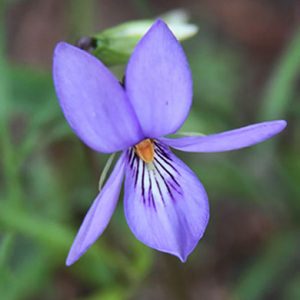 Bird's Foot Violet
Bird's Foot Violet  Butterfly Milkweed
Butterfly Milkweed 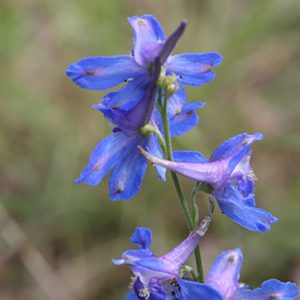 Carolina Larkspur
Carolina Larkspur  Cherokee Prairie Natural Area
Cherokee Prairie Natural Area 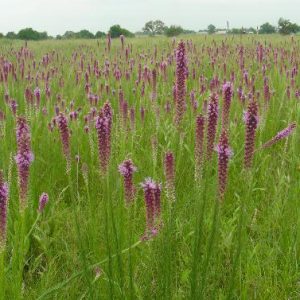 Chesney Prairie Natural Area
Chesney Prairie Natural Area 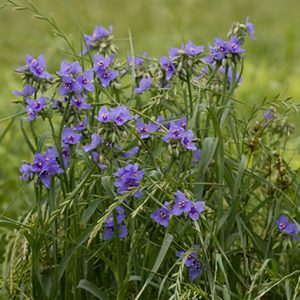 Ohio Spiderwort
Ohio Spiderwort  Pale Purple Coneflower
Pale Purple Coneflower 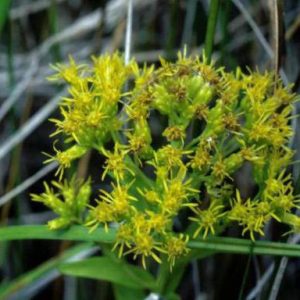 Riddell's Goldenrod
Riddell's Goldenrod 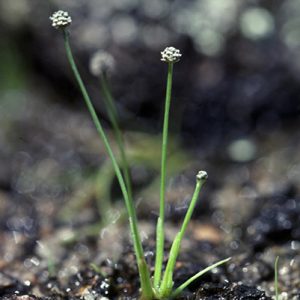 Small-Headed Pipewort
Small-Headed Pipewort  Twistflower
Twistflower 




Comments
No comments on this entry yet.